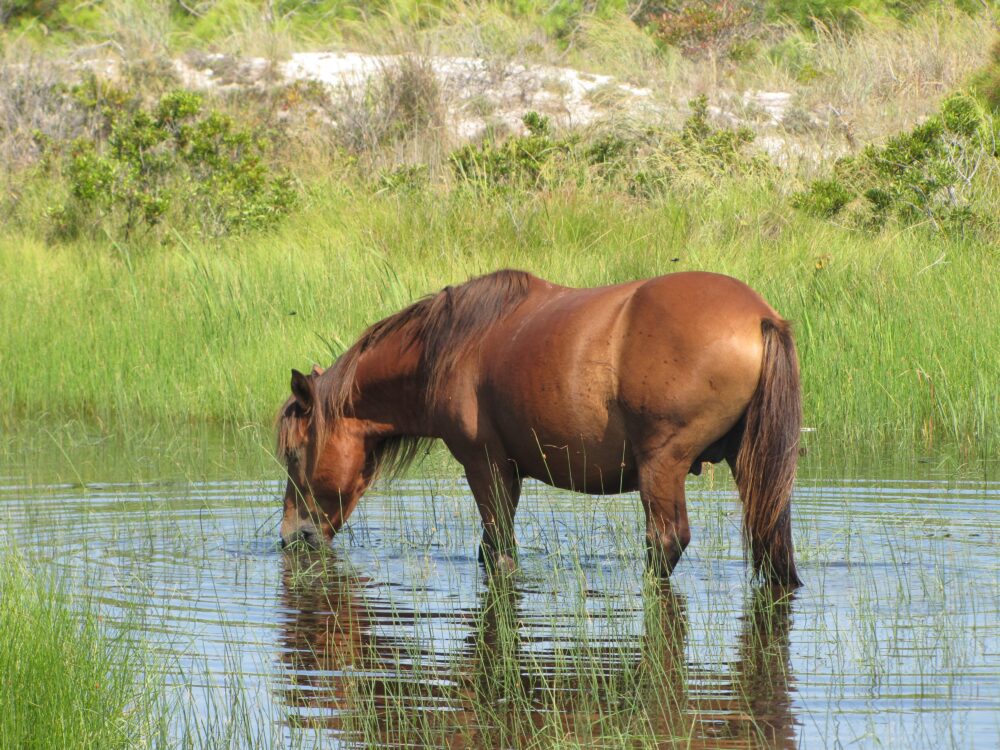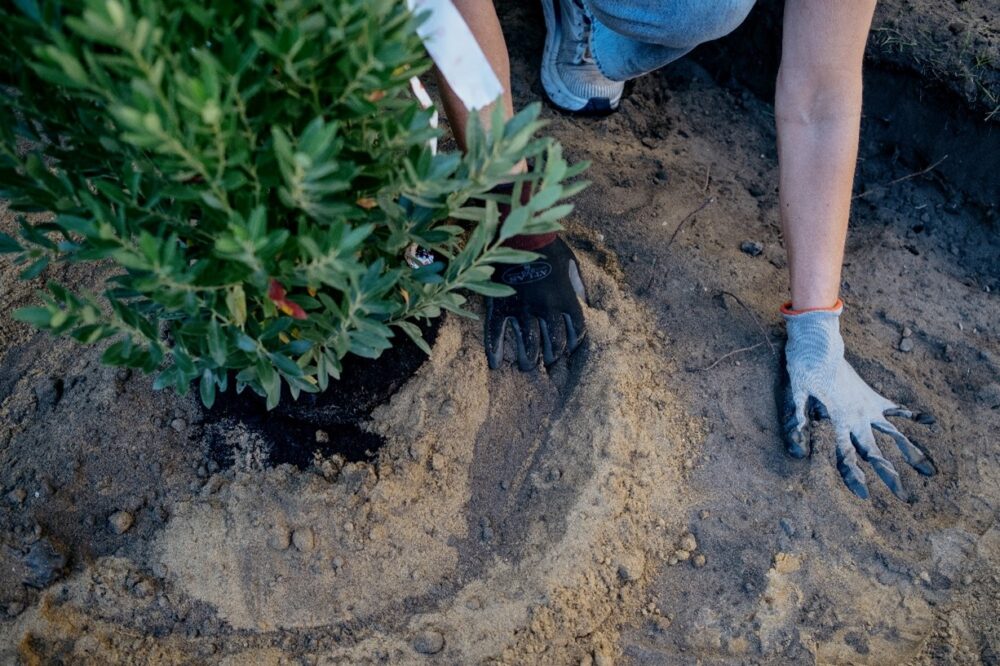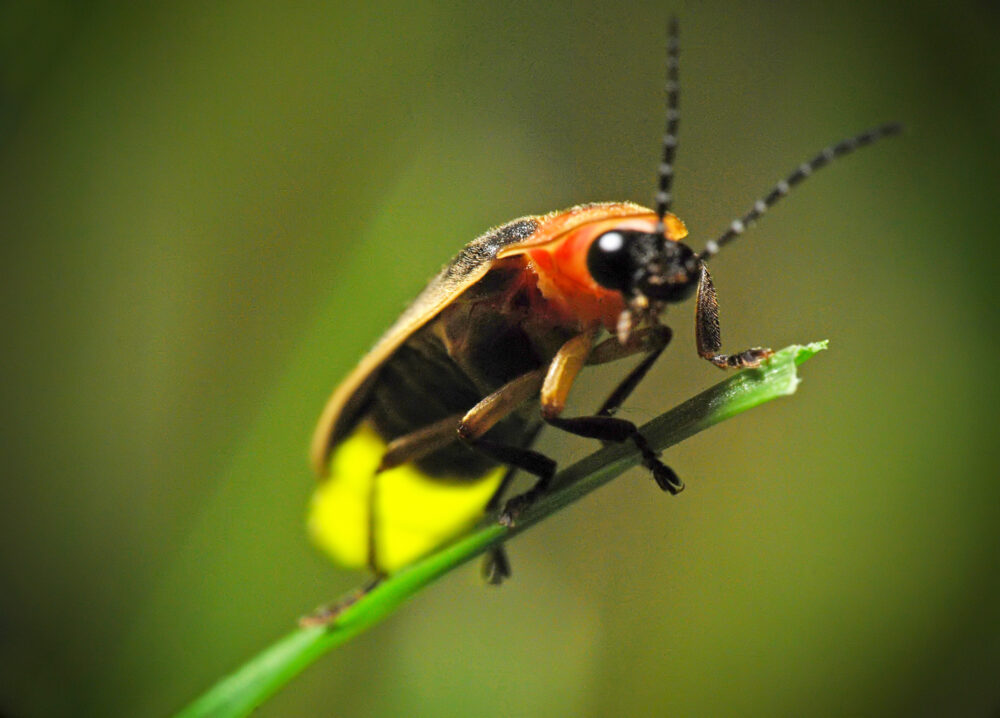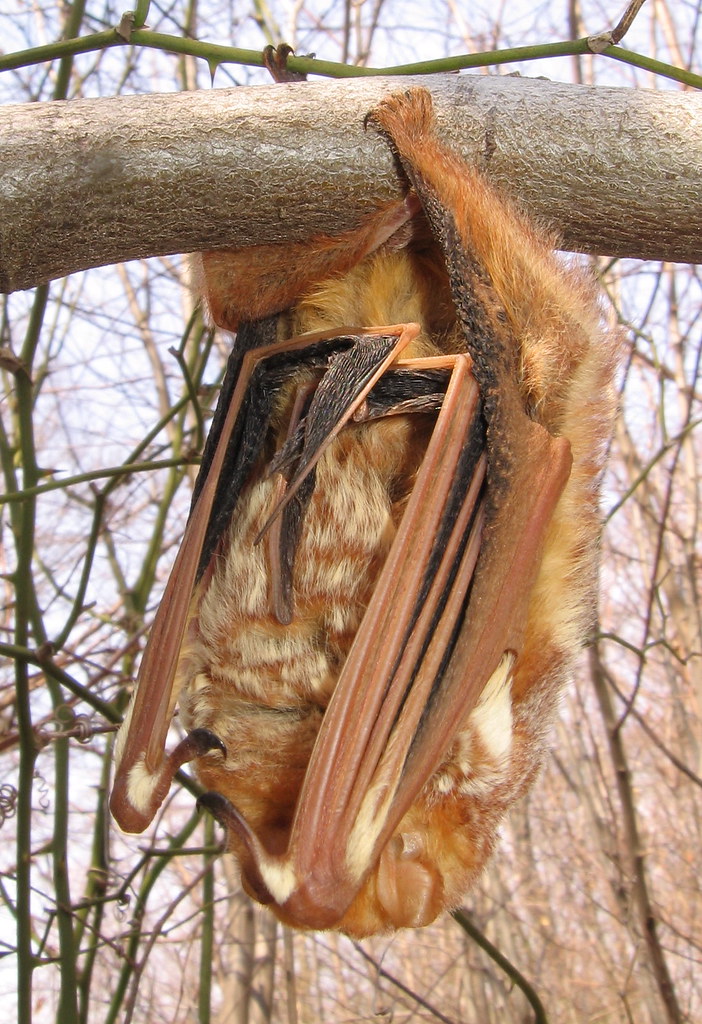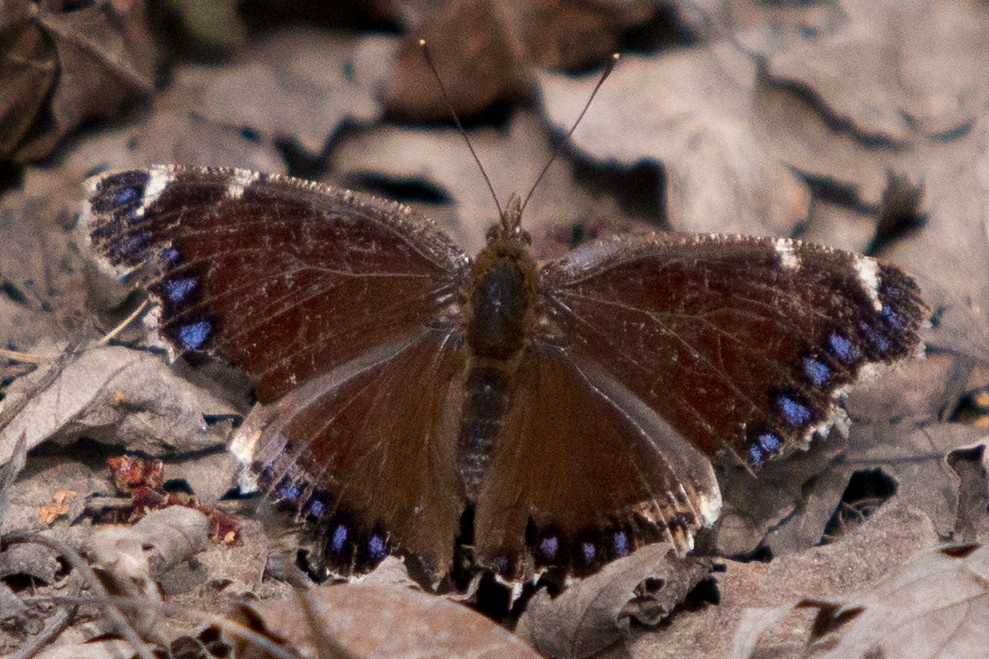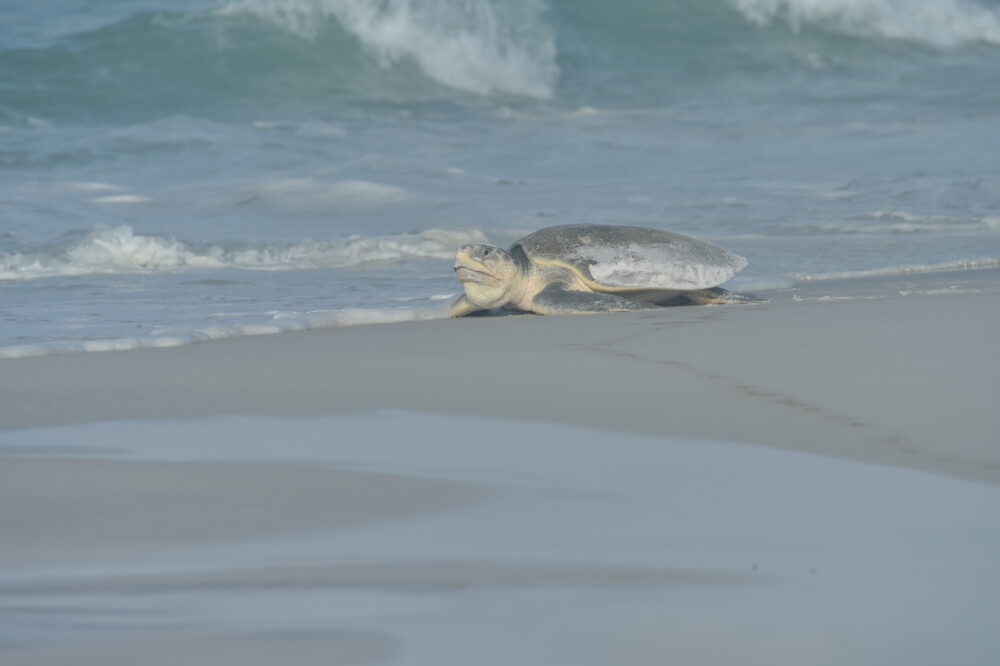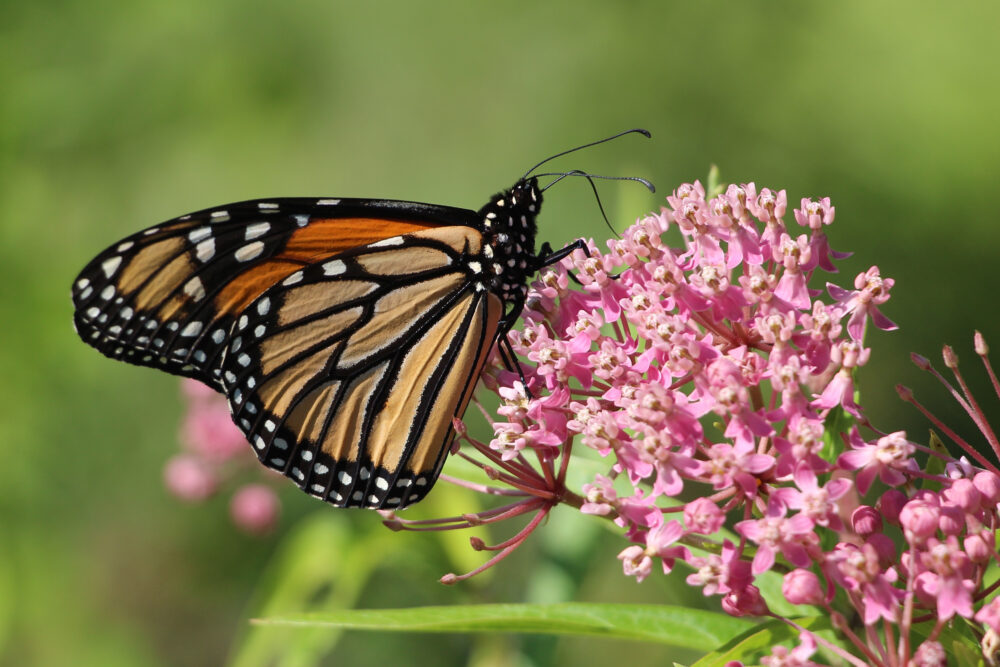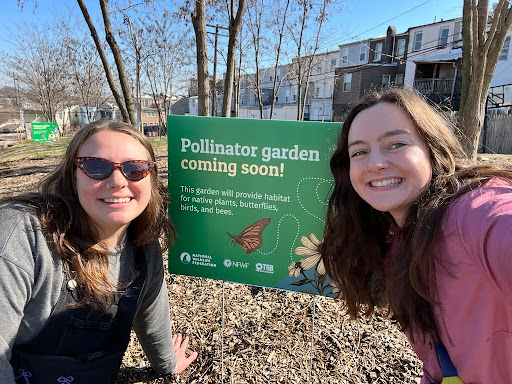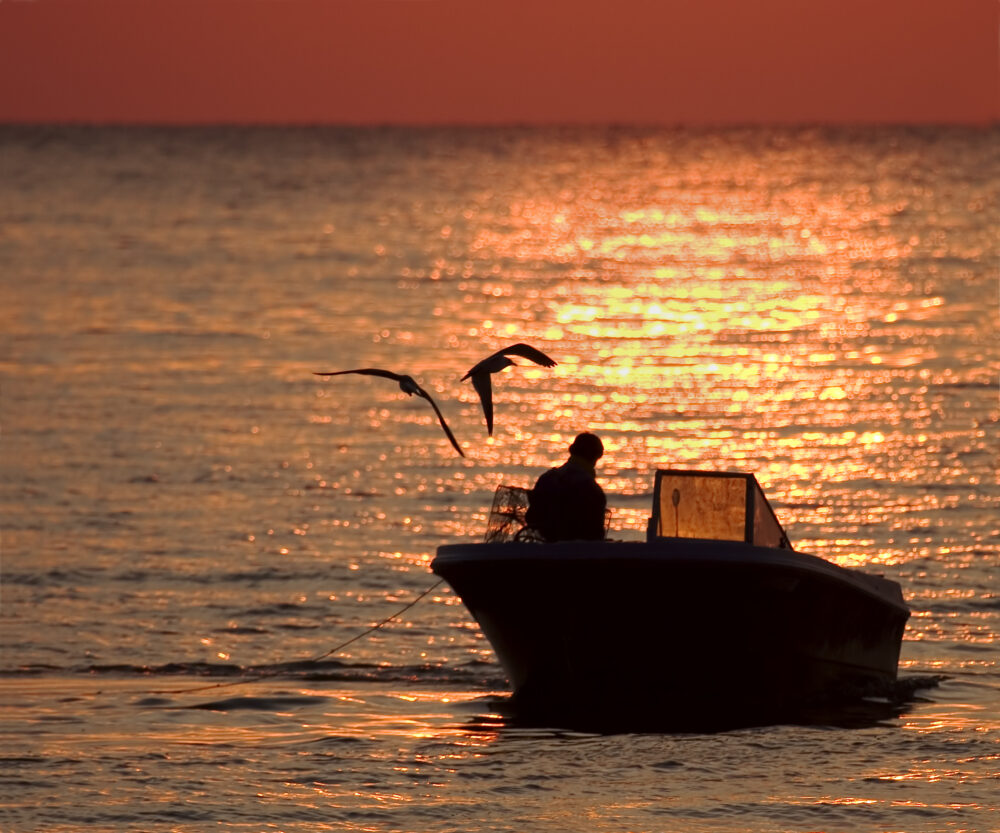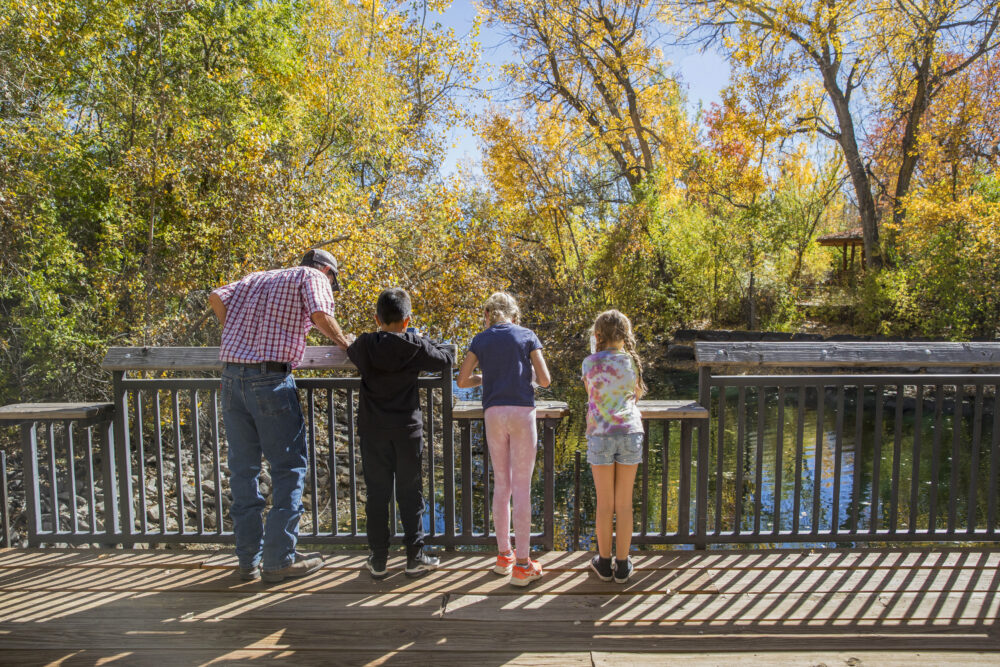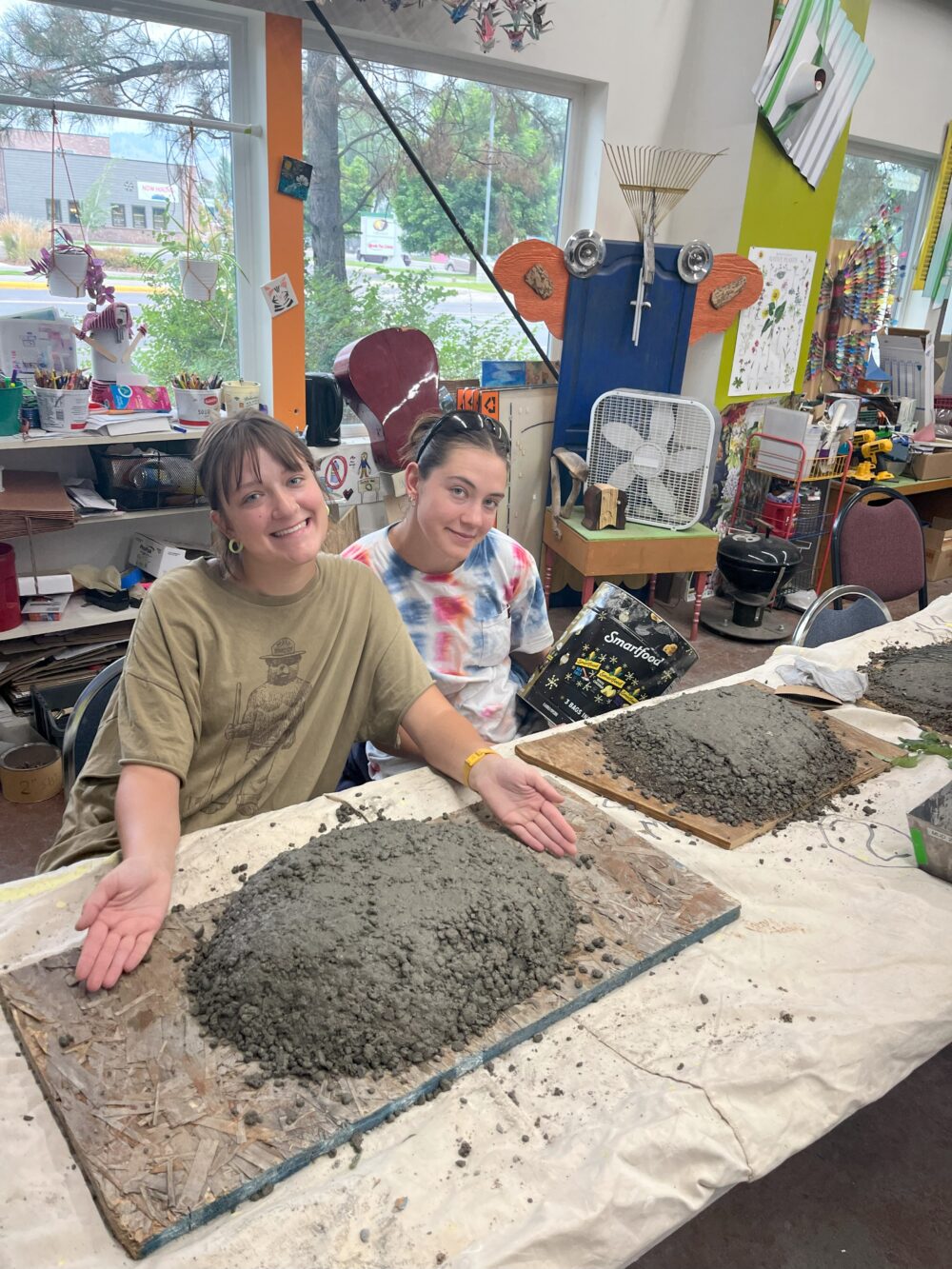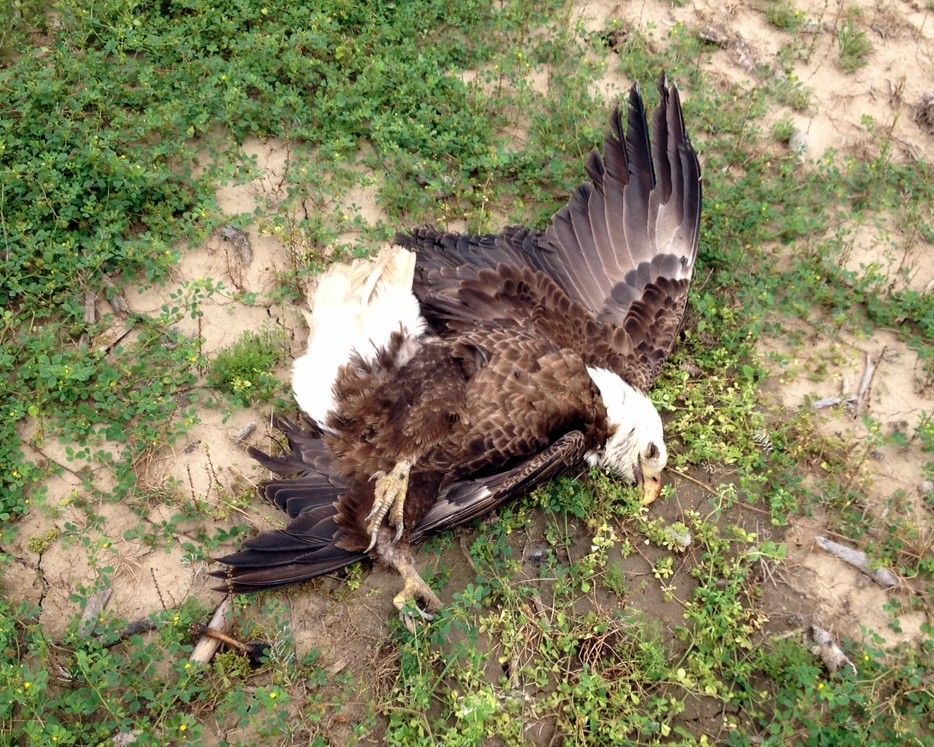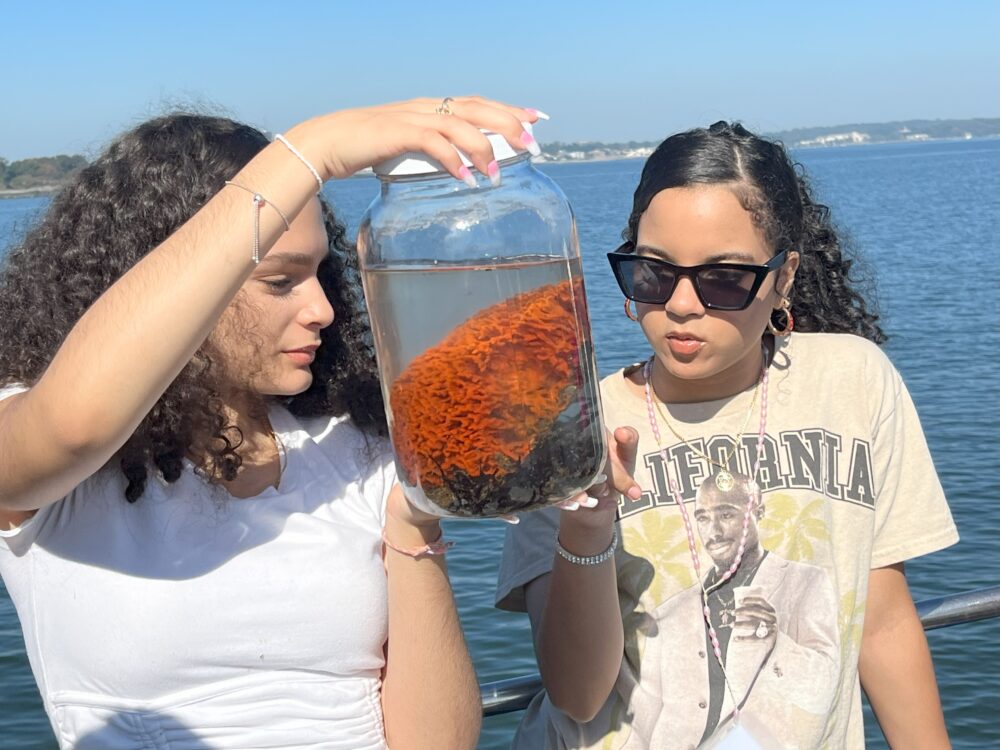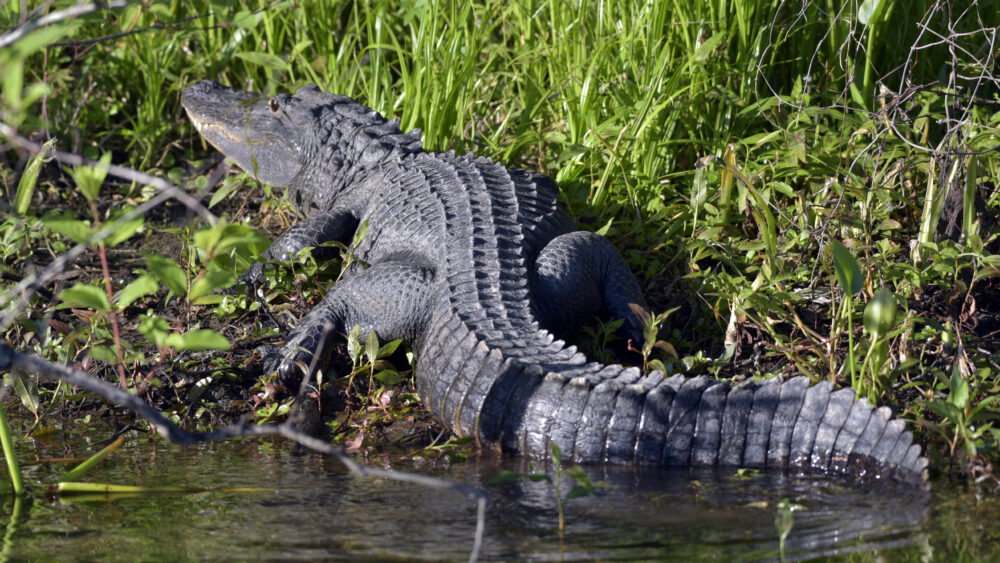We have much more to do and your continued support is needed now more than ever.
10 Ways National Wildlife Federation Education Programs Are Helping Wildlife
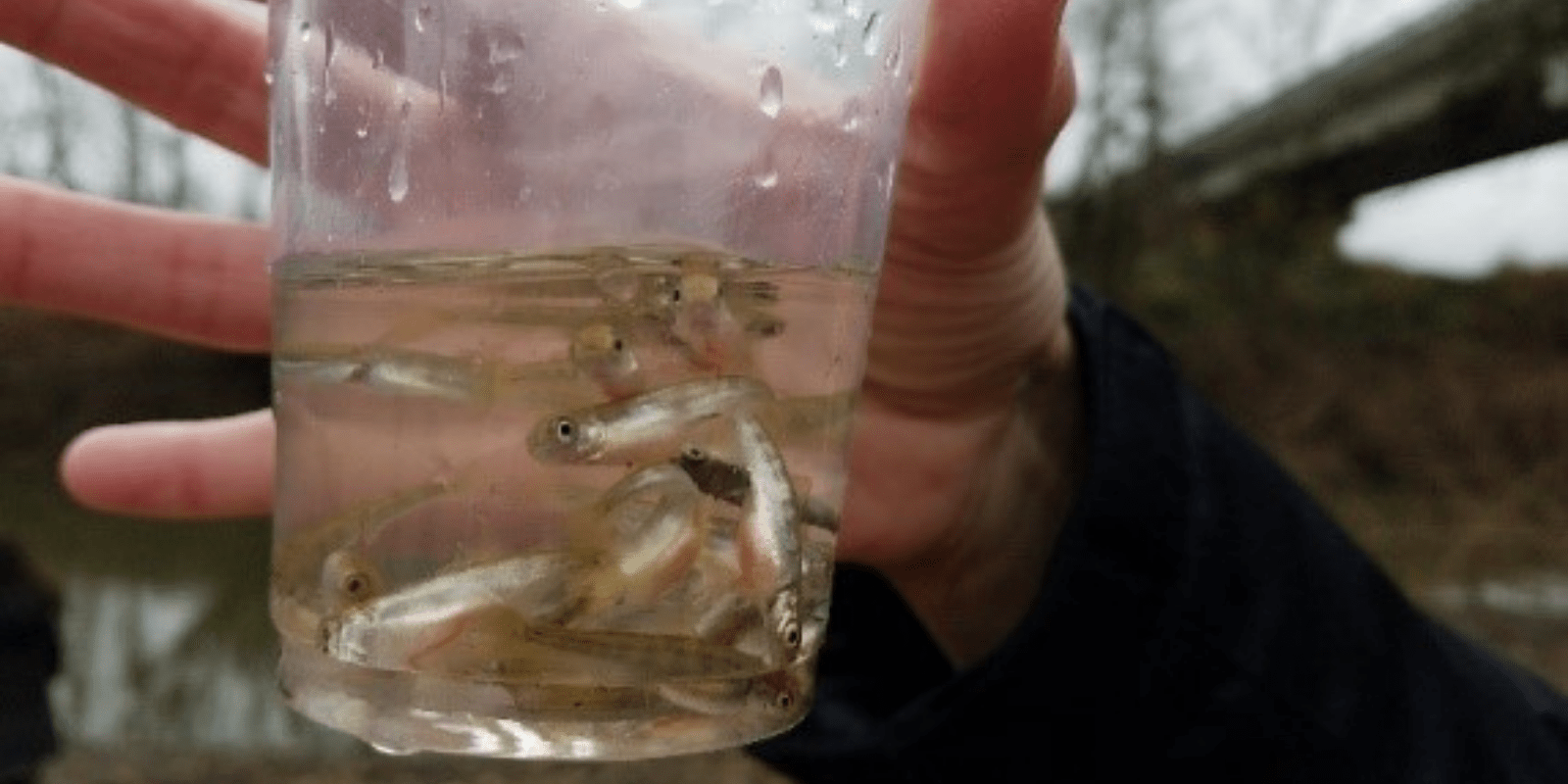
The beginning of a new school year is the perfect time to celebrate the many ways that the education programs of the National Wildlife Federation are supporting wildlife. Our tools and resources are being used by students, teachers, families, and communities across the country to take action for wildlife both large and small. For example, our NWF Eco-Schools USA program engages roughly 3 million K-12 students in active STEM learning while taking actions through pathway topics such as biodiversity, climate change and watersheds. Another 7,400 schools are certified Schoolyard Habitats®, restoring wildlife habitat while using their school grounds for cross-curricular learning. Working together with our partners across the country, here are 10 ways our education programs are helping wildlife and working to inspire the next generation of conservationists.
-
Raising Salmon in the Classroom.
Students in Oregon have a unique opportunity when it comes to connecting with one of their native species. Many schools participate in the Oregon Department of Fish and Wildlife’s Fish Eggs to Fry With the help of our Oregon affiliate, the Association of Northwest Steelheaders, participating NWF Eco-Schools engage in interactive activities while also learning about watershed health through the Eco-Schools USA WOW Pathway. Reeling in Salmon Stewards takes a closer look at the program and the ways students are connecting to a local species and making a difference for native fish in their region.
-
Connecting Urban Residents with Wildlife.
When you think of wildlife, an urban environment is usually not the first thing that comes to mind. But did you know the City of Baltimore is certified as a NWF Community Wildlife Habitat?
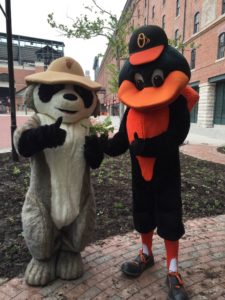
Ranger Rick and Oriole Bird. Photo by Hilary Esquina They recently celebrated the first Baltimore Wildlife Week, building upon similar events hosted by the National Wildlife Federation in Seattle and Los Angeles. The week included unveiling a natural play space with wildlife themed climbing structures and the planting of a 5,000 square foot pollinator meadow at a local school. Read more about A Wildlife Week in Charm City Programs like NWF’s Community Wildlife Habitat™ and the Mayors Monarch Pledge continue to provide communities around the country with ways to take action to increase habitat for pollinators and wildlife.
-
Earning an EcoLeaders Wildlife Crossing Badge.
Animals like the moose, lynx, black bear and mountain lion need large areas of land to roam—for sufficient food, safe cover, and to mate. But the wild places animals rely on are being fragmented by man-made structures, and as a result, thousands of animals have died trying to reach food, water, shelter and breeding sites.
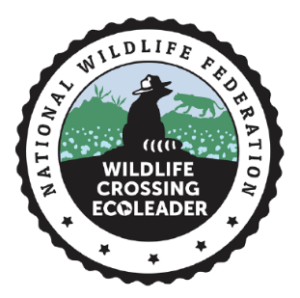 The National Wildlife Federation is working to provide pathways wildlife can use to cross vast expanses of key habitat! Members of NWF’s EcoLeaders, a free career and leadership development program, are invited to earn the NWF EcoLeader Wildlife Crossing Badge. Earning the badge requires participants to learn about the important work NWF is doing to provide safe pathways for wildlife and to choose from a list of action items that will define their personal commitment and impact for wildlife.
The National Wildlife Federation is working to provide pathways wildlife can use to cross vast expanses of key habitat! Members of NWF’s EcoLeaders, a free career and leadership development program, are invited to earn the NWF EcoLeader Wildlife Crossing Badge. Earning the badge requires participants to learn about the important work NWF is doing to provide safe pathways for wildlife and to choose from a list of action items that will define their personal commitment and impact for wildlife. -
Protecting Our Local Water Sources.
While implementing the new NWF Eco-Schools Watershed Pathway, students at Parkview School in New Jersey conducted hands-on activities to learn about runoff from fertilizer, chemicals, and pet waste and its impact on their local watershed and wildlife. Another New Jersey Eco-School, the Joyce Kilmer School, redesigned their courtyard garden to include flood prevention tubes covered with river rock. These actions help by facilitating improved water quality for wildlife. Led by our New Jersey affiliate, New Jersey Audubon Society, both schools were recently awarded the Eco-Schools USA Green Flag award, the highest award a school can earn.
-
Building Schoolyard Habitats® and Monarch Recovery Gardens.
Students and teachers all over Texas have been creating certified Schoolyard Habitats® and monarch recovery gardens. Not only do these habitats benefit local wildlife, but many of the schools are part of the National Wildlife Federation’s Monarch Heroes program, working to save declining monarch populations. After the devastating effects of Hurricane Harvey in 2017, students whose schools were able to reopen worked hard to rebuild their gardens and plant new habitat for wildlife. The gardens also serve as a way to help mitigate flooding. Read their story: Schoolyard Habitats Provide Resiliency in Houston Independent School District.
-
Creating a Better Tomorrow for the Earth.
Every summer in Atlanta, students from Metro Atlanta high schools along with college peer mentors participate in the Annual Earth Tomorrow Summer Institute. Earth Tomorrow® is National Wildlife Federation’s environmental education and youth leadership development program that creates opportunities for high school students of color to develop environmental literacy and life skills that empower and inspire them to improve the environmental health of their communities. During the 2018 Summer Institute, student leaders engaged in activities that included water-quality monitoring, gardening, learning about climate change, and camping. Students also rolled up their sleeves to put in over 8 hours of community service which included the removal of trash from local creeks and streams; reclamation of acres of urban forest from invasive species; and the restoration of wildlife habitat across Atlanta.
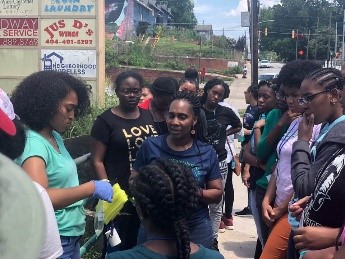
2018 Earth Tomorrow Summer Institute. Credit: Marya Fowler -
Growing a Wild NYC.
How many native plants can 550 kids from 14 Brooklyn schools plant? If you guessed thousands, you would be correct! Not only were the students involved in the planting, but they actually raised the seedlings in their classroom from seeds they collected in their national park, Gateway National Recreation Area. They then replanted more than 15 species of native plants including varieties of milkweed, asters, goldenrods, evening primrose, dogbane, and ironweed in their schoolyards and at Gateway. Learn more about Growing a Wild NYC, another example of partners working together to restore pollinator habitat.
-
Storytelling for Wildlife Conservation.
Last year, the National Wildlife Federation and Vulcan Productions launched a contest asking students to submit a big idea to help save African elephants. A 6th grader from Arkansas submitted the winning entry and traveled to Africa recently to meet Naledi, the orphaned elephant that was the inspiration for the Every Elephant Counts contest.
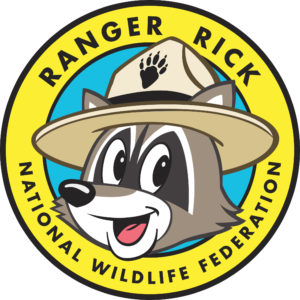 His solution involved building national pride around the elephants starting in the local community in Africa. Although the contest has ended, students and teachers can still access the free classroom activities. Kids can also enjoy more great stories every month with the National Wildlife Federation’s award-winning Ranger Rick® magazine, which has been sharing stories about wildlife for over 50 years.
His solution involved building national pride around the elephants starting in the local community in Africa. Although the contest has ended, students and teachers can still access the free classroom activities. Kids can also enjoy more great stories every month with the National Wildlife Federation’s award-winning Ranger Rick® magazine, which has been sharing stories about wildlife for over 50 years. -
Planting Trees for Wildlife.
Planting trees on school grounds is a perfect opportunity for students and the entire school community to learn about the environment, and provides unique hands-on nature-based learning experiences. The planting and care of the trees teaches students about wildlife, science, and ecology. In Washington State, Port Washington Middle and High School worked under the direction of the city forester to plant trees for Earth Day, adding diversity to a degraded woodland adjacent to the school grounds. The AP Environmental Science class at the high school studies the trees as a part of their curriculum. Students, the community, and city staff care for and monitor tree health. Learn more about the NWF Trees for Wildlife™ program and download age-appropriate activity guides and resources.
-
Getting Young Kids Connected to Nature.
The NWF Green Hour program has a three-year target to connect 21 million American children, teens and young adults with the outdoors. “Adopt a goal of an hour per day of time for children to play and learn outdoors in nature” One way to work towards this goal is by connecting kids with nature and establishing healthy habits early. Working with the Natural Learning Initiative and Qualistar Colorado, the National Wildlife Federation’s Early Childhood Health Outdoors (ECHO) partnership aims to bring dynamic play spaces and programming to outdoor spaces. Read some of the ECHO stories to see how this creative program is connecting children to nature and wildlife, one space at a time.



